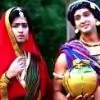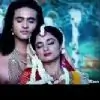CHIDAMBARA RAHASYAM
The secrets behind Chidambaram Nataraja TempleLord Shiva dances here in Chidambaram.
A temple is called 'Kovil' in Tamil. It literally means( Ko- il) the abode of the Lord. Whenever the mere name 'kovil' is mentioned, it specially means Chidambaram which is split as
Chit( gnana or wisdom) + Ambaram ( akasa or space) .
Structure of a typical Siva Temple
A classical Siva temple as per Agama rules will have five prakaras or circuits each separated by walls one within the other. The outer prakaras will be open to the sky except the innermost one. The innermost one will house the main deity as well as other deities. There will be a massive wooden or stone flag post exactly in line with the main deity.
The innermost prakara houses the sanctum sanctorum ( karuvarai in Tamil). In it sits Shiva, the supreme Lord.
Symbolism behind the structure of a Shiva Temple
1. The temple is so constructed as to resemble the human body with all its subtleties.
2. The five walls encircling one another are the kosas ( sheaths) of human existence .
a. The outermost is the Annamaya kosa , symbolizing the material body.
b. The second is Pranamaya kosa , symbolizing the sheath of vital force or prana.
c. The third is Manomaya kosa, symbolizing the sheath of the thoughts, the mana
d. The fouth is the Vignyana maya kosa, symbolizing, the sheath of the intellect
e. The fifth and innermost is the Ananda maya kosa, symbolizing the sheath of Bliss.
3. The sanctum which is in the prakara symbolizing the Ananda Maya Kosa sheath ,
houses the lord, seated as the Jiva within us. It is to be noted that the sanctum is an
unlit space, just as if within the heart closed on all sides.
4. The entry Gopuras are likened to the feet, as resembling a person who is lying on the
back with the toe up.
5. The flag post depicts the sushumna nadi which raises from the Mooladhar (base of the
spine ) to the sahasrar ( vertex in the head).
6. Some temples will have three prakarams. There they represent the stoola, sukshma
and karana sareeras (bodies) of a human being Some temples have only one and they
represent all the five.
Chidambaram temple and its symbolism:
Saint Thirumoolar, whose legend is intricately woven with Chidambaram, says in his thirumanthiram
????????????
??????????? ????? ??????????
??????????? ????? ?????????
??????????? ????? ????????
??????????? ????? ????????????
transliterated into English, it reads
mAnudarAkkai vadivu sivalingam
mAnudarAkkai vadivu chidambaram
mAnudarAkkai vadivu sadAsivam
mAnudarAkkai vadivu thirukkoothe
Meaning: "Sivalingam is of the form of the human body; So is Chidambaram ; So is Sadasivam ; And so is his divine dance".
- The temple has the above five prakaras resembling the sheaths.
- Nataraja gives dharshan from the sanctum called Chit Sabha with a golden roof.
- The roof has 26,000 golden tiles (see picture), denoting the number of breaths of a person in a day.
- These tiles are fixed to the wooden roof with the help of 72,000 nails depicting the number of nadis (the invisible ducts carrying energy to various parts of the body)
- As the heart is to the left of the body, the sanctum in Chidambaram is also aligned slightly leftward.
- On top of the Chit sabha roof, we find nine kalasas (made of copper) depicting the nine shaktis (powers)
- The roof has 64 cross wooden reapers denoting the 64 arts.
- The artha mandapa has six pillars denoting the six shastras
- The mantapa next to the artha mantapa has eighteen pillars symbolizing the eighteen puranas.
- There are five steps leading to the Chit sabha from the Kanaka sabha depicting the five lettered Panchakshara mantra ( Na ma chi vA ya)
- The Chit sabha roof is supported by four pillars symbolic of the four Vedas.
Symbolism of Nataraja Swamy
1. Nataraja's dance is said to indicate the five divine acts which are
a. Creation . Nataraja dances with a small drum called damarukam in one of his
right hands. Easwra is nada brahmam. He is the origin of all sounds (nadam).This is
the seed (vindu) from which the tree of the Universe emanated.
b. Protection (Operation)- In another of the right hands, he shows the 'Abhaya
Mudra', meaning he is the kind protector .
c. Destruction; He has fire in one of his left hands , symbolizing destruction.
When everything is destroyed by fire, only the ash will remain which the Lord has
smeared on his body.
d. The foot which is planted shows the act of hiding
e. The raised foot shows the act of bestowing
- Nataraja swamy has the Vigraha ( icon) of Devi Sivakama Sundari to his left . This symbolizes Ardhanareeswara , ' the Lord who has the female as his left half'. To his right there is a screen. When the deeparadhana ' showing lamps takes place to the swamy and to the left side , the screen is removed and we see five vertical long hangings of golden vilva leaves. We see nothing behind it. Sivakami shows the Saguna Brahman (the God with a form) that is Nataraja . The Saguna Brahman leads us to the Nirguna Brahman (the God without form or the God who has formlessness as his form). This is told as 'Chidambara Rahasyam' by the Dikshitars , who are the traditional pujaris in the temple.
- Shiva's dance is called the cosmic dance by many scholars. In Chidambaram, this dance is called 'Ananda Tandava'
- Lord Maha Vishnu also saw the Divine dance. In a nearby mantapa called Chitrakoota, Maha Vishnu, gives us dharshan in his fully reclining Yoga Nidra pose on the snake bed. If one stands on a small lotus sculpted on the floor slab in front of Narayana, one can at the same time see Nataraja in his right side.
- Sages Patanjali and Thirumoolar also saw Nataraja's dance in Chidambaram. Their figures are embossed on the Silver doors of the Chit Sabha.
I think you enjoyed reading the above. Nataraja Rahasyam is said to have come to Tamilnadu from the Indus ' Saraswati civilization. The Saiva Agamas, which teach tantric Saivism, reveal much more than the above. Next time you visit Chidambaram, remember all this, and worship Nataraja who will grant you release from the pains of the worldly life and show you the path of Gnana.
The Tejas (radiance) of Brahma and Vishnu comes from the radiant eye of the Chidambaram Temple's Chit Sabha and the cosmic dance of Lord Nataraja. His consort Sivakama Sundari is the repository of Jnana Sakti (Supreme knowledge). The Chidambara Mahatmya legend passed from Nandikeswara to Sanatkumara to Sage Vyasa to Sage Suta. Hearing the legend releases the soul from all bonds and facilitates
Sayujya, union with Siva (Siva's eight forms). Siva revealed the greatness of Chidambara Mahatmyam to Nandikeswara. Some students believe that Nandi is the theriomorphic (bull) form of Siva from the time Siva was known as Pasupati, the Lord of animals (and also of individual souls). Because of Nandi's devotion, Tapas, and virtue, Siva made him the Chief of Siva Ganas (attendants). Nandi eulogized Siva and begged him to narrate the greatness of Chidambara Mahatmyam (CM).
Siva narrates the greatness of CM
CM is sacred and includes the Chidambara Rahasyam, the Secret of Siva's form. Thinking of Chidambaram expunges all the sins and its auspiciousness rivals and exceeds that of Kailasa, my Himalayan abode. The devotees living Chidambaram cross the sea of Samsara of birth and rebirth and attain liberation at my feet; such is its greatness.
Brahma, Vishnu, Ganesa, Deities, Sages, Rsis, and Jnanis eulogize and worship Chidambaram which gives happiness and removes sins. It cuts asunder the bondage of Maya and releases the devotees from Samsara. The Sages and Risis attain their siddhis at Chidambaram, which is one of my permanent abodes. It shines with my Tejas. The Lord continues his narration. I perform the Ananada Tandava with Bhavani on my side for the Yogis who understand and embrace Siva Tattva; the universal Mother confers grace and exudes happiness and beauty. My Ananda Tandava is the source of love, happiness, joy, reverence, and admiration to all the witnesses including Vighnesvara, Brahma, Vishnu, Indra, Mahalakshmi, Vyaghrapada (Tiger-Foot)-- LORD OF DANCE -- Sage Patanjali, Adi Sesha, 3000 sages, and Hiranya Varman. Grace is unattainable for him who does not witness my Ananada Tandava. Those who are aware of Siva Loka and Siva Moksa have no use for or desire to go to Svarga loka to enjoy celestial life. Siva Sayujyam is a permanent release from Samsara.
Siva continues his talk to Nandikesvara. By my continuous dance, I confer Atmananda (Supreme Bliss) to my devotees, while my consort Chitsakti watches me dance. Those who make offerings of money and Homa (fire offering), chant Mantras and make charitable contributions, though small and insignificant, I bestow on them great merit and grace. Chidambaram is known for its rectangular Siva Ganga tank, where I perform my Ananda Tandava. Ritual dipping in the tank brings auspiciousness and increases devotion to me. The god of death, Yama, has a lot of respect for the one who takes repeated dips in the tank. Darsan awaits a devotee who dips in the tank. The devotee who chants Panchakshara 1008 times is absolved of all sins and attains my rupam (sarupam = Siva's form). Siva gives the list of auspicious days good for bathing in Siva Ganga.
Edited by apurvachoudary - 12 years ago





































